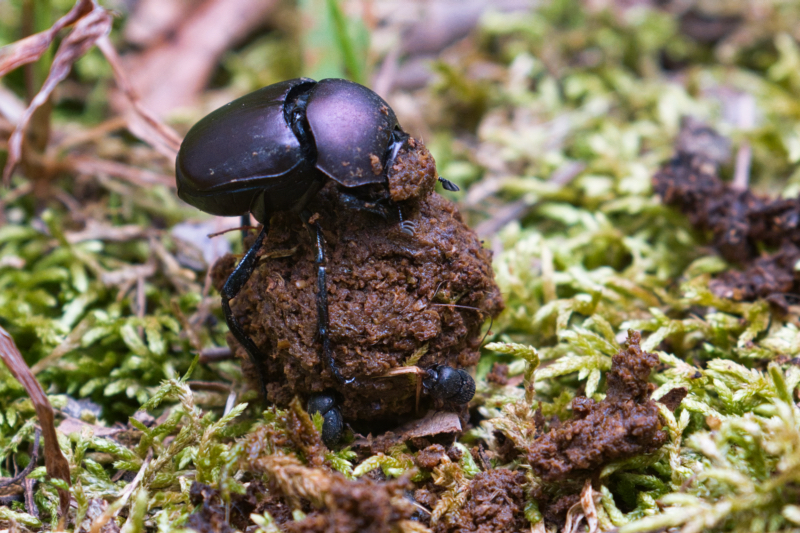While walking in Arkansas, I came across a dung beetle hard at work rolling its ball across a patch of moss. A much smaller beetle clung to the surface, hitching a ride as the larger one pushed ahead. The scene showed just how much effort these insects put into their work.

Dung Beetle Behavior and Role in Arkansas
Dung beetles play an important role in the ecosystem. By burying and rolling dung, they recycle nutrients back into the soil and reduce parasites in grazing areas. This behavior also supports seed dispersal. The smaller beetle in the photo is likely a juvenile or a mate taking advantage of the ride. Watching how these beetles navigate obstacles shows just how strong and persistent they are.
Photography Notes: Capturing the Dung Beetle Up Close
This moment was photographed in Arkansas while kneeling low to the ground for a beetle’s-eye view. The moss made a natural background that helped the darker beetle stand out. Light was diffused, which kept glare off the beetle’s shell.
Photo Details
- Camera: Fujifilm X-T3
- Lens: Canon RF 200–800mm
- Aperture: ƒ/8
- Shutter Speed: 1/450
- ISO: 1600
- Exposure Compensation: +0.67
- Field notes: Shot handheld at close distance. Focused on the beetle’s head for sharp detail.

